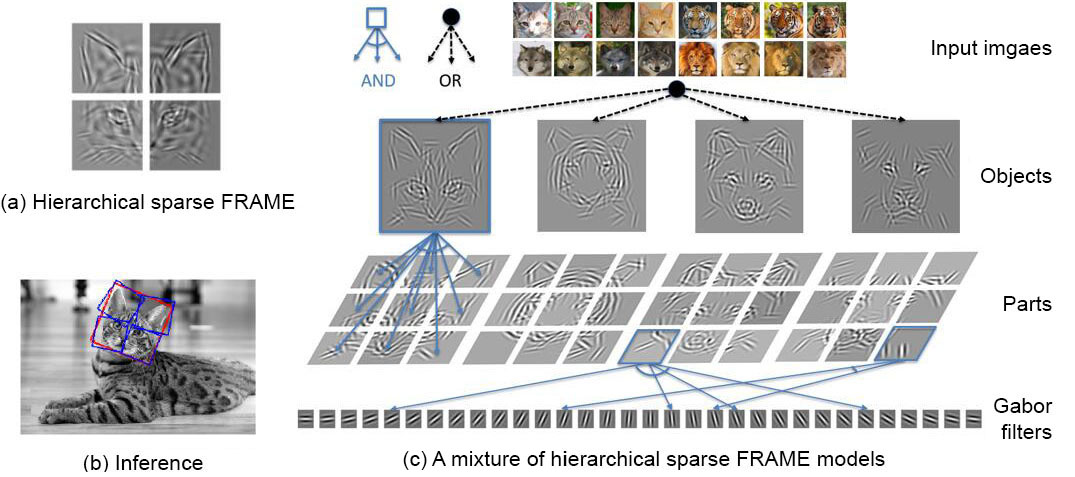IEEE Conference on Computer Vision and Pattern Recognition 2017
Generative Hierarchical Learning of Sparse FRAME Models
Jianwen Xie 1 Yifei Xu 2 Erik Nijkamp 1 Ying Nian Wu 1 Song-Chun Zhu 1
1
University of California, Los Angeles (UCLA), USA
2
Shanghai Jiao Tong University
Abstract |
|
This paper proposes a method for generative learning of hierarchical random field models. The resulting model, which we call the hierarchical sparse FRAME (Filters, Random field, And Maximum Entropy) model, is a generalization of the original sparse FRAME model by decomposing it into multiple parts that are allowed to shift their locations, scales and rotations, so that the resulting model becomes a hierarchical deformable template. The model can be trained by an EM-type algorithm that alternates the following two steps: (1) Inference: Given the current model, we match it to each training image by inferring the unknown locations, scales, and rotations of the object and its parts by recursive sum-max maps, and (2) Re-learning: Given the inferred geometric configurations of the objects and their parts, we re-learn the model parameters by maximum likelihood estimation via stochastic gradient algorithm. Experiments show that the proposed method is capable of learning meaningful and interpretable templates that can be used for object detection, classification and clustering. |
Model
Representation
|
Learning
|
Experiments
Exp 1 (Clustering): Evaluating mixture models by clustering tasks
Exp 2 (Detection): Object, part, and key point localization
Exp 3 (Classification): Evaluating unsupervisedly learned models via classification
Reference
[1] Xie, J., Lu, Y., Zhu, S. C., & Wu, Y. N. (2016). Inducing wavelets into random fields via generative boosting. Applied and Computational Harmonic Analysis.[2] Xie, J., Hu, W., Zhu, S. C., & Wu, Y. N. (2015). Learning sparse FRAME models for natural image patterns. International Journal of Computer Vision.
The work is supported by NSF DMS 1310391, DARPA SIMPLEX N66001-15-C-4035, ONR MURI N00014-16-1-2007, and DARPA ARO W911NF-16-1-0579.


